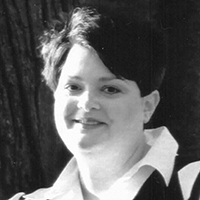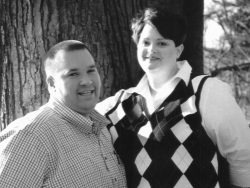Acute Intermittent Porphyria (AIP)

My name is Amy Chapman, and I am 35 years old.
I was diagnosed with AIP on December 19, 2007, by Dr. Karl Anderson at the University of Texas Medical Branch (UTMB) Porphryia Center in Galveston. I am the first one in my family to receive Panhematin, and also the first to have my DNA tested at the Mount Sinai Porphyria Clinic so that other family members could be tested for the disease even if they are not ill. I am also involved in an AIP study with Mount Sinai now.
It took me a total of five times to get the tests done right. All along I was constantly sick. Since I was diagnosed, my attacks have been treated with Panhematin infusions over six different hospitals stays, ranging from 4 to 14 days.
Looking back, for years before my diagnosis, I was sick every three weeks on average. In addition to porphyria, I have always been prone to colds and sinus infections, and every time I have one, like clockwork, an AIP attack follows. I would go to the doctor and receive medicine, but nothing worked. I had severe stomach pain, muscle pain, and nerve pain; I had nausea and headaches; I couldn’t remember things and was nervous; my blood pressure was high; and I had severe constipation for days into a week. At one point they gave me medication for high blood pressure, but it didn’t work.

It was terrible for my husband, my family, and me! One time, even after my diagnosis I went in to a local emergency room with my personalized ER Kit from the American Porphyria Foundation, including my diagnostic test results, contact information for the Foundation and instructions on what to do to make me feel better. I asked them to call the APF and to speak with Dr. Anderson at UTMB. But the doctors were not familiar with my diagnosis. Finally, a resident who had studied AIP a bit admitted me to the hospital.
I took it upon myself to learn from my mother and on my own so that I could educate my doctors and help them understand my disease. All these years I was taking all the wrong medications and it was making my health worse. So when I got diagnosed, I changed to all safe medications on Dr. Anderson’s instructions.
One day, my mother found a hospital in Grand Rapids, MI that was familiar with AIP. They had just learned about the disease and Panhematin therapy. When I went in that day, I could not function. My blood pressure very high, and I had pain so severe I could hardly speak or move. I was not eating and had pain in my muscles and a headache. I was nervous, had high sugar and constipation, but the staff worked so quickly and kept a close eye on me.
The Panhematin came off the plane the next morning, and Dr. Anderson spoke with the physician treating me and advised him on how to care for me. I was able to show my doctor the APF website, and he went home and read through all the information related to treating AIP. He asked me questions daily and listened and believed me. And each day I went through my own checklist to make sure of the timing of my medications. I will always speak up to remind them if something is not in place and the nurses quickly correct the issue. I walked out of the hospital feeling so much better, and smiling. I was a new person. Panhematin works so well for me!
The hospital staff held a meeting to educate the nurses and pharmacists, and they came in to speak with me on a daily basis. I learned so much. My last attack was in December 2009, and I first went to the hospital when, along with all of my usual symptoms, I developed a new one: I was paralyzed from the waist down. My husband picked me up and reassured me that I would be OK, and in six days I walked out of the infusion center feeling so much better.
I am always learning, researching and asking questions, and I truly appreciate Lundbeck, Inc. (maker of Panhematin), the Porphryia Foundation, and the doctors, nurses, and pharmacists who have helped me. I also appreciate the support and patience of my family. Each person in a patient’s life plays an important part in helping them. We need to spread the word about this rare disease and make it known in the medical field so that all can be treated quickly and properly. In the end, effective treatment may mean saving the patient’s life.
Editor's Note: You can read more on this website about Panhematin therapy for Acute Porphyrias, including contact information for express emergency shipping.”